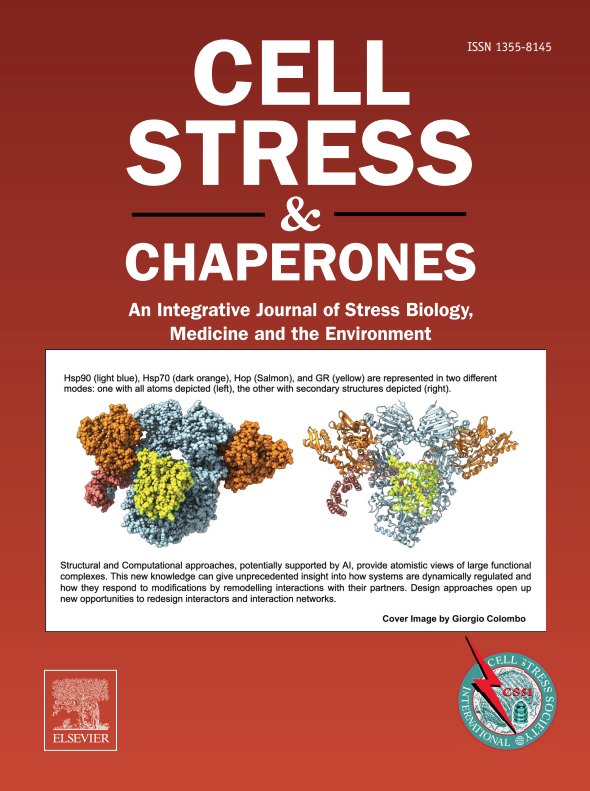热应激对马拉巴里山羊生理参数和血液生物标志物的影响。
IF 3.2
3区 生物学
Q3 CELL BIOLOGY
引用次数: 0
摘要
热应激对牲畜健康、生产力和适应能力构成巨大挑战,特别是在热带气候下。在气候变化和全球气温上升的情况下,了解牲畜对热应激的生理、血液学、生化和分子反应至关重要。本研究旨在评估原产于印度南部的马拉巴里山羊品种对热应激的生理、血液学、生化和分子反应。测定热休克蛋白(HSP) HSP27、HSP70和HSP90的基因表达谱。将12只成年公羊分为放牧组和非放牧组,在冬季和夏季进行为期2个月的研究。夏季环境温度和太阳辐射较高,温度湿度指数(THI)较高,表明热应激(77.50±0.27)。山羊呼吸频率、直肠温度和体表温度显著升高,表明动物处于生理应激状态,尤其是在夏季。放牧山羊和非放牧山羊在这些参数的季节变化上存在差异。脉搏率受季节和放牧方式的显著影响。马拉巴利山羊的血液学参数如单核细胞计数、平均红细胞血红蛋白(MCH)、平均红细胞体积(MCV)和平均红细胞血红蛋白浓度(MCHC)主要受季节变化的影响。然而,在不同的放牧策略中,红细胞压积(HCT)水平的季节性变化并不均匀。谷草转氨酶(AST)和丙氨酸转氨酶(ALT)的生化指标表现出显著的季节变化。此外,ALT和总蛋白浓度在放牧组之间存在差异。季节变化对放牧山羊和非放牧山羊葡萄糖浓度的影响有所不同。在我们的研究中,HSP70和HSP90基因的表达在夏季有所增加,但HSP27基因的表达没有表现出任何差异。这些结果表明,作为应激反应机制,马拉巴里山羊在应对热应激时经历了生理、血液学、生化和分子方面的变化,包括重要热休克蛋白的上调。本文章由计算机程序翻译,如有差异,请以英文原文为准。
The effect of heat stress on the physiological parameters and blood biomarkers in Malabari goats
Heat stress poses a great challenge to livestock health, productivity, and adaptability, especially in tropical climates. Under the scenario of climate change and rising global temperatures, understanding the physiological, hematological, biochemical, and molecular responses to heat stress in livestock is crucial. The present study was designed to assess the physiological, hematological, biochemical, and molecular responses to heat stress in the Malabari goat breed, which originated in South India. The gene expression patterns of heat-shock proteins (HSPs) HSP27, HSP70, and HSP90 were also assessed. Twelve adult does were divided into grazing and nongrazing groups, and the study was conducted for 2 months during winter and summer seasons. Higher ambient temperature and solar radiation were recorded in summer, with a higher temperature-humidity index indicating heat stress (77.50 ± 0.27). Significant increases in respiratory rate, rectal temperature, and surface body temperature were detected in goats, indicating that the animals were under physiological stress, especially during the summer season. The seasonal changes in these parameters differed between grazing and nongrazing goats. The pulse rate was significantly influenced by both season and grazing patterns. The hematological parameters like monocyte count, mean corpuscular hemoglobin, mean corpuscular volume, and mean corpuscular hemoglobin concentration in Malabari goats were mainly influenced by seasonal variations. However, the seasonal shift in hematocrit levels was not uniform across the grazing strategies. Biochemical parameters, including aspartate aminotransferase and alanine aminotransferase (ALT) levels, exhibited significant seasonal variations. Additionally, ALT and total protein concentrations differed between the grazing groups. The impact of seasonal variations on glucose concentration varied between grazing and nongrazing goats. HSP70 and HSP90 gene expression increased over the summer, but HSP27 gene expression did not show any difference in our study. As a stress response mechanism, these results show that Malabari goats experience physiological, hematological, biochemical, and molecular changes in response to heat stress, including the upregulation of important HSPs.
求助全文
通过发布文献求助,成功后即可免费获取论文全文。
去求助
来源期刊

Cell Stress & Chaperones
生物-细胞生物学
CiteScore
7.60
自引率
2.60%
发文量
59
审稿时长
6-12 weeks
期刊介绍:
Cell Stress and Chaperones is an integrative journal that bridges the gap between laboratory model systems and natural populations. The journal captures the eclectic spirit of the cellular stress response field in a single, concentrated source of current information. Major emphasis is placed on the effects of climate change on individual species in the natural environment and their capacity to adapt. This emphasis expands our focus on stress biology and medicine by linking climate change effects to research on cellular stress responses of animals, micro-organisms and plants.
 求助内容:
求助内容: 应助结果提醒方式:
应助结果提醒方式:


